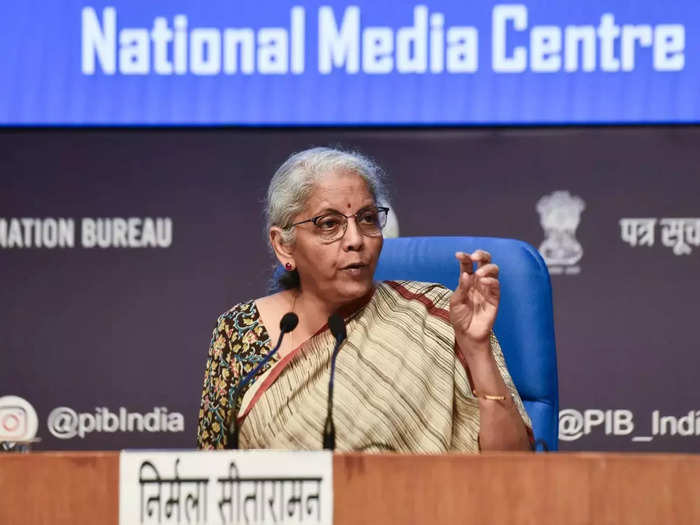
India’s authorities healthcare spending seems to be on the rise, however a better look reveals a regarding development. Whereas the headline figures may counsel a rise, the fact is a gentle decline in well being expenditure as a proportion of each the funds and GDP over the previous 5 years (2018-19 to 2023-24).
This decline is even starker when adjusted for inflation. In actual phrases, spending has barely saved tempo since 2019-20. As a share of the full funds, well being spending has shrunk from 2.4% in 2018-19 to simply 1.9% in 2023-24. Equally, the share of GDP allotted to well being has fallen from 0.30% to 0.28%, as per a report from the Instances of India.
Rising expectations forward of Finances 2024
Because the Finance Minister Nirmala Sitharaman prepares to current the total funds for the present fiscal on July 23, the expectations from the well being sector has solely been rising.
“The Union Finances 2024-25 is a pivotal second for India’s healthcare sector. Constructing on the ₹64,180 crores allotted in 2023-24 underneath the Pradhan Mantri Atmanirbhar Swasth Bharat Yojana, we’d like enhanced tax incentives and monetary assist for healthcare startups to catalyze innovation. Important investments in digital well being infrastructure, significantly AI, will enhance affected person outcomes and operational effectivity,” says Dr Sravani Reddy G, Founder & CEO, Soprav Healthcare Consulting.
“Strengthening public-private partnerships will enhance healthcare accessibility and high quality, leveraging non-public sector effectivity. Moreover, centered efforts on affordability and entry, resembling decreasing out-of-pocket bills and bettering insurance coverage protection, are important for a extra equitable healthcare system.”
“The healthcare sector in India is getting ready to excellence. There may be an elevated give attention to treating distinctive affected person circumstances, robotic surgical procedures, and rising prominence of AI for correct prognosis. To succeed in the following part, emphasis should be laid on innovation, analysis & improvement, and infrastructure improvement. These are the foundations for India’s well being sector to attain a global commonplace of therapy for all,” hopes Joseph Pasangha, Group COO, SPARSH Hospital, Bengaluru.
Well being tax not serving to sufficient
This example is additional difficult by the introduction of the well being cess in 2018. This tax levy was supposed to spice up authorities spending on healthcare, significantly for the underprivileged. Nonetheless, the collected funds appear to be merely filling the hole created by cuts to common budgetary allocations for well being.
In 2022-23, over Rs 18,300 crore of the central authorities’s well being spending got here from the well being cess. Excluding this quantity, the precise budgetary allocation for well being stands at a regarding Rs 59,840 crore. That is decrease than the pre-pandemic stage of Rs 66,042 crore allotted in 2019-20, even with out adjusting for inflation.
The place’s the cash going?
The supposed goal of the well being cess appears to be falling brief. In 2018, well being spending accounted for two.4% of the federal government’s whole expenditure. If this ratio had remained fixed in 2023-24, the well being funds ought to have been over Rs 1.07 lakh crore. As an alternative, the revised expenditure, together with the well being cess, stands at simply Rs 83,400 crore.
Even the extra allocations for the COVID-19 pandemic (Rs 10,655 crore and Rs 15,955 crore in 2020-21 and 2021-22 respectively) can’t masks the general decline. When mixed with the common well being funds (excluding well being cess), the full spending in these years nonetheless falls in need of what it could have been if the two.4% share of 2018-19 had been maintained.
Extra for various medication
Whereas the share allotted to Ayush (Ayurveda, Yoga & Naturopathy, Unani, Siddha and Homeopathy) has seen a major enhance, spending on essential areas like well being analysis has seen solely marginal progress. Moreover, a serious portion of analysis funding goes to the Indian Council of Medical Analysis, with solely a short lived enhance through the peak of the pandemic response.
Essentially the most regarding lower is within the allocation for well being and household welfare, encompassing nationwide packages, the Nationwide Well being Mission, and well being system strengthening. This important space has seen a considerable decline in its share of each GDP and whole funds expenditure, falling from a peak of over 2% in 2017-18 to a mere 1.7% in 2023-24. Excluding the well being cess, this determine drops even additional to 1.5%.
What this implies
This decline in authorities well being spending raises severe issues about India’s dedication to public healthcare, significantly for its most susceptible populations. Elevated funding in well being is essential for a rising nation like India, and a reversal of this downward development is crucial to make sure accessible and high quality healthcare for all.
The 2024 Interim Well being Finances noticed a lift in whole healthcare expenditure from Rs. 79,221 crore to Rs. 90,171 crore. Consultants have opined that The healthcare funds ought to embody at the very least 2.5% of the full funds. However it stays to be seen how the precise image will change into on July 23.
“The 2024-25 funds presents a possibility to construct on previous successes whereas addressing shortcomings, guaranteeing that India’s healthcare system stays resilient, modern, and patient-centric. This funds can pave the best way for a more healthy, extra equitable future for all,” concludes Dr Reddy.
(With inputs from TOI)
Adblock take a look at (Why?)
